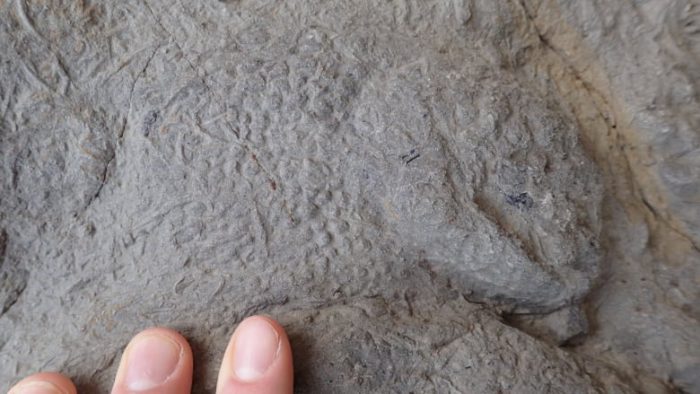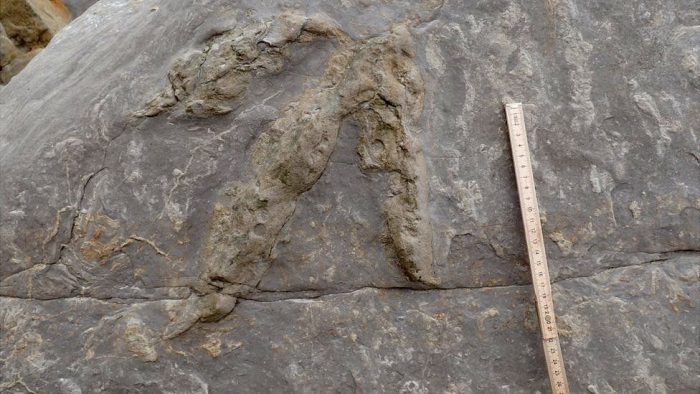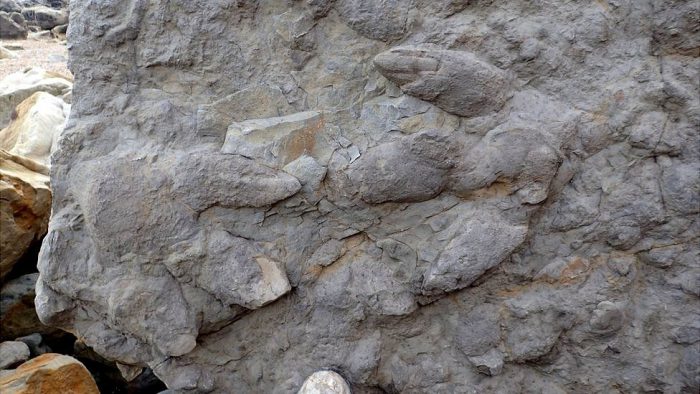Fossils are always top of mind here at OWLconnected. But the thing that is striking us the most about them lately? The sheer variety of them these days.
There are dino feathers trapped in amber. Entire clutches of pterosaur eggs. An armoured dinosaur 'mummy'. And just recently, we brought you a new fossil of a dinosaur jaw cast in precious opal. It's amazing.
And yet, if it's possible, the bar is still being raised. Case in point ...
"The detail in these prints is absolutely incredible." #dinosaur https://t.co/3MOlAgZ4Fh pic.twitter.com/wk2Eov6xsq
— Cambridge University (@Cambridge_Uni) December 17, 2018
This beautifully-preserved footprint made by an ankylosaurus that was found in England!
Reach out and touch the past

This picture helps show just how detailed the skin impressions are on some of these prints. (Neil Davies/Cambridge University)
Over the last four years, a team of researchers at Cambridge University have investigated some eroding cliffs near Hastings, England. There, the crumbling rock has uncovered an exceptional collection of dinosaur fossils.
These fossils include footprints, claws, and impressions of skin that reveal the texture of these reptiles—a thing that we can still reach out and touch 100 million years later!
Wide variety

This imprint was likely made by a raptor-sized theropod. (Neil Davies/Cambridge University)
Hastings is a city on England's southern coast. It is most famous for being the site of the Norman conquest of Saxon England in 1066, which brought dramatic changes to the country. Buuuuut ... it has also long been known for another kind of history: its excellent prehistoric fossils! Still, even for an area with this reputation, these recent finds are especially good.
According to the researchers, there are at least seven species included in these fossils. They include Iguanodon, Ankylosaurus, a type of stegosaur, some sauropods, and even meat-eating theropods. Footprints are very valuable to paleontologists, because they help to offer more complete pictures of dinosaurs. After all, a complete skeleton of any prehistoric animal is almost never found. But when you add super-detailed impressions like these to bones found elsewhere, the ancient animals really do begin to come alive!
 Going toe-to-toe ... it's a pair of Iguanodon footprints revealed in a cliff in England! (Neil Davies/University of Cambridge)
Going toe-to-toe ... it's a pair of Iguanodon footprints revealed in a cliff in England! (Neil Davies/University of Cambridge)









